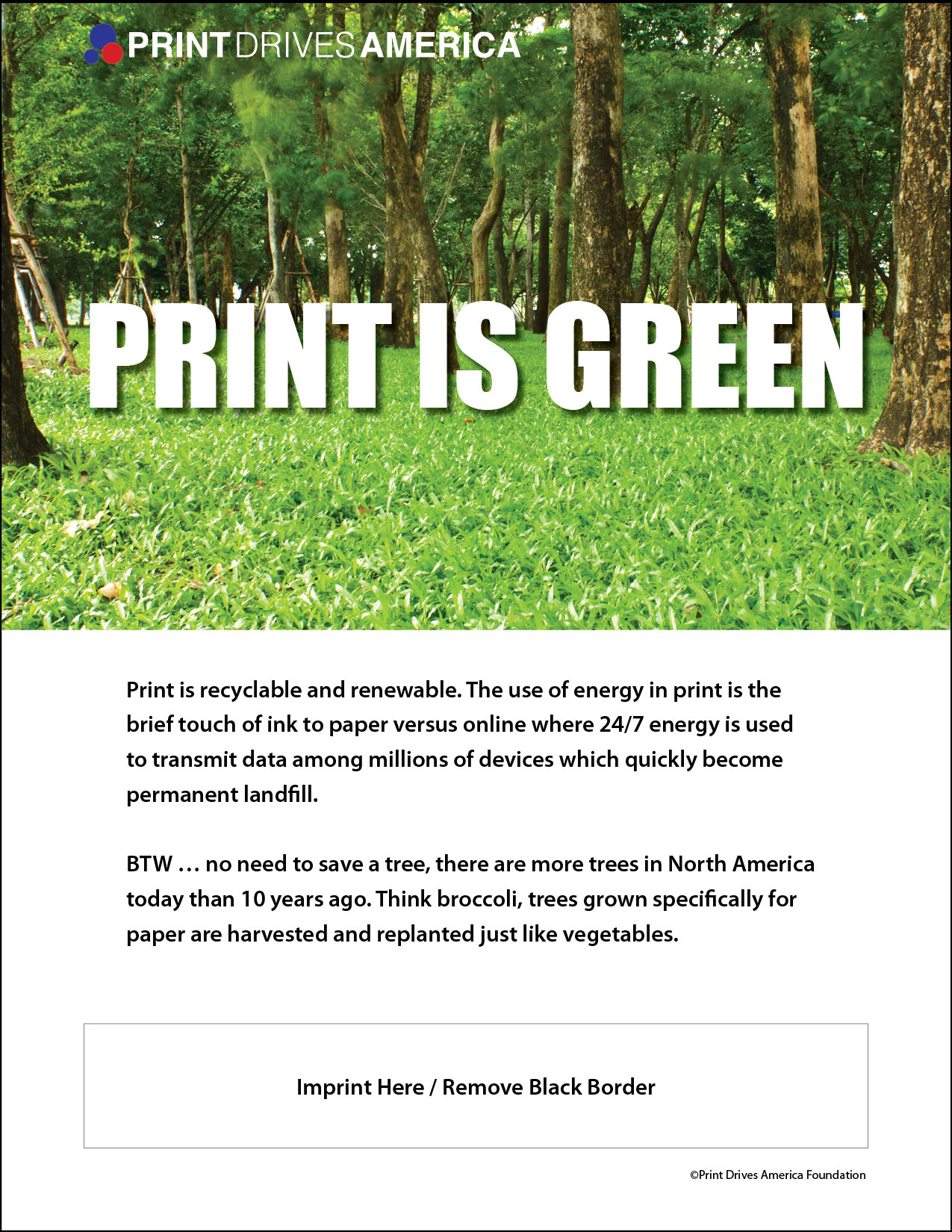Print is an integral form of communication because it can not only break through the mass amounts of digital clutter, but it has also seen growing response rates over the past decade. Occasionally, print comes under fire for not being environmentally conscious, but just as Toshiba’s “No Print Day” back in October was put to rest by sharing the facts, we’re going to tackle a few of the most common misconceptions about print and the environment.
Myth One: Paper Kills Trees
Most paper comes from managed forests or ‘tree farms.’ Tree farmers, like other farmers, grow trees and replant trees for the specific purpose of being harvested. As long as the demand for paper stays high, tree farmers will continue to replant approximately three trees for every one tree harvested.
Managed forests are one of the main reasons that U.S. forest coverage has actually grown slightly in the past 100 years. According to Paperbecause.com, tree growth in the U.S. is about 36 percent higher than the annual volume of trees harvested.
Myth Two: Electronic Communication is more environmentally conscious
Email messages alone account for 33 billion kilowatts of energy annually, while over 60 percent of paper is produced from recycled energy. In the U.S., the average industry only uses about 10 percent recycled energy to produce a product. Furthermore, paper is a renewable, recyclable product. Conversely, lap tops, desktops, T.V.s and other electronic devices become toxic if they’re not disposed of properly.
Finally, myth three: The generic statement “Print is not Green”
According to printisbig.com, last year, 51.5 million tons of paper were recycled — or enough paper to fill the empire state building 124 times. Additionally, of the trees harvested from production only 11 percent are actually used to make paper. Finally, about 70 percent of all direct mail is recycled.
Print is not dead and it is environmentally conscious.
Ultimately, every form of communication and most of our daily activities will have an environmental impact on this world. The important factor is to understand how our actions effect the environment and take steps everyday to both conserve and preserve energy in order to reduce our carbon footprint.
Timothy Freeman
President
Print & Graphic Communications Association




